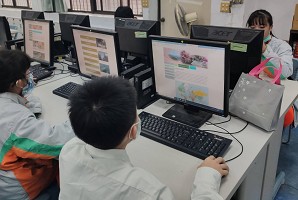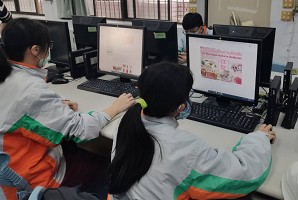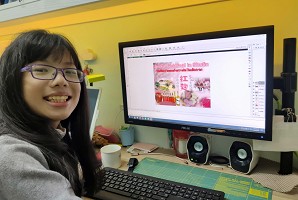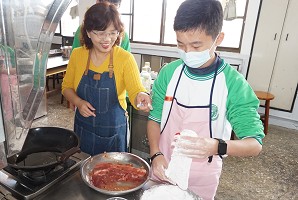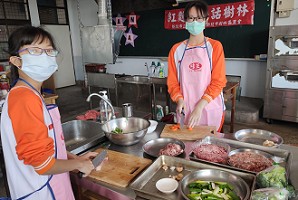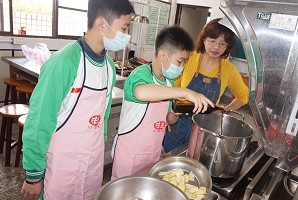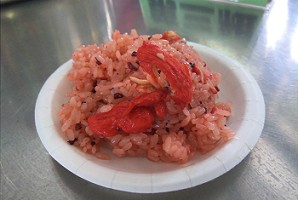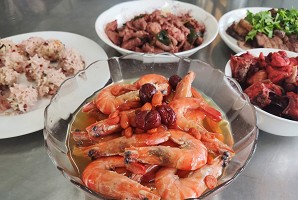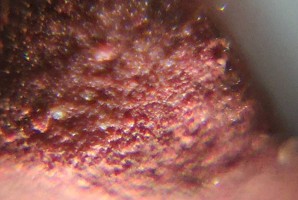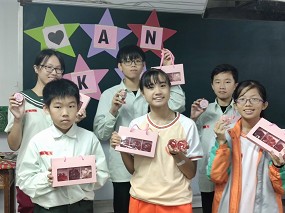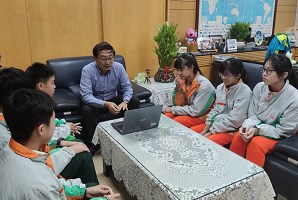
The research on our chosen topic has given us a better understanding of the Shulin Anka Culture, and our school has also included Anka into its curriculum and continues to develop lessons around them.

| Equipment Type | Name of the Equipment | Usage |
|---|---|---|
| Computer Hardware | School PCs, Home PCs |
1. Research and organization of data 2. Photo editing 3. Web design |
| Computer Software |
1. Kompozer 2. Google Drive 3. Photocap |
1. KompoZer (a free application) was used to make web pages. 2. We used Google Cloud and Drive to share and store our work. 3. Photocap was primarily used for editing photos. |
| Other Research Equipment |
1. Camera 2. Digital Voice Recorder 3. Smartphones |
These were useful tools for gathering research and working on our web pages. |
Our research topic is Anka Culture. With the assistance of our teachers and the district offices, we have managed to collect much precious historical data, from which we can combine, analyze, and structure the research on our web page, and making Anka dishes during class time. The meeting with the district office allowed us to learn more about the historical significance of Anka Culture and its connection with Shulin.
Of the many beneficial skills we gained through this research project, the four most important skills are listed below. The first skill is our web design ability. In the process of making our web page, we learned how to tell stories on our websites. Although our web interface is not as well done as professional websites, throughout our process of exploration, we gained a lot of valuable and practical experience that we could never learned through our textbooks. The second ability is how to interview people. Under the guidance of our teachers, we learned how to design appropriate questions for the interview. During the interview, we learned how to listen carefully, and through the use of our digital recording equipment, we recorded the interview. The third ability is research and the compilation of the information. Before making the web page, we must learn how to do research and learn to effectively organize all the information we collect. There is also an extra fourth skill. The ability to apply our knowledge practically. After learning the skills required, we made our own Anka meals and made Anka soap and designing the soap boxes as unique gifts for our graduating classmates.
Our school have featured courses that combines the study of ANKA from2016 , innovative learning, and spatially aesthetic environment in order to help our students grow and excel in their learning. We participated in the Anka Cultural Festival to promote the school ’s anka curriculum, which was well received by people.
The rationale behind our ANKA courses is based on locality education, science exploration, health promotion, and Maker Education. From there we have developed four systems of courses which covers martial arts, home economics, natural sciences and the humanities. Moreover, the content of these four systems of courses are designed to help students achieve high moral standards, identify with their local history and culture, be intellectually innovative, articulate, and become an explorer and maker who can put ideas into practice.
We would like to express special thanks to our sponsors and supporters in Anka project as follows: to the staff of Shulin District Office for providing Anka Festival information, to Farmers' Association for the fund about supporting Anka research, to Sulin Anka Association and Shulin’s Winery for offering precious and historical data, and to Dr. Tzu-Ming Pan for supplying any useful and relevant professional instruction.
After completing our webpage and research project, we learned very much about the Anka Culture of Shulin and learned about the various applications of Anka. In addition to its use in wine making, cooking, and scientific research, we also found that Anka also functions to lower high blood lipids, high blood pressure, and as an ingredient in health supplements used to maintain a healthy body. Anka is truly an amazing thing.
In our classes, we learned how to make delicious Anka dishes, making it a very delightful experience for us all. In addition, as a school, we made Anka soap as gifts for the district head and other city officials to promote Shulin’s Anka culture. This project was truly a once in a lifetime experience for all of us involved.
The text on our webpages were all collected by our team members, who fully absorbed and turned the research into our own knowledge. We then used spare time to discuss and work on the project and amend them after discussions. Our teacher also guided us on how to write, correct, and modify our research. If any literature is cited, we indicated it in our citations. If quotes from interviewees are used, we clearly stated who said each quote in the text. The pictures were mostly photos that we took by ourselves or photos authorized for use by the district office. They were then edited and placed into our webpage. If anyone needs reference for the pictures we have online, we have noted the source of the file below the picture.
